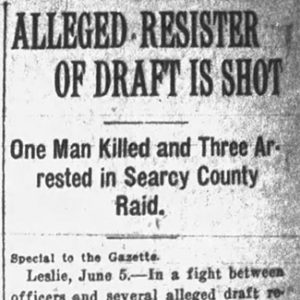 Searcy County Draft War Article
Searcy County Draft War Article
Entry Type: Event
 Searcy County Draft War Article
Searcy County Draft War Article
Searcy County, Skirmish at
Searcy, Affair at
Searcy, Fairview, and Augusta Expeditions
aka: Attack on Steamers Celeste and Commercial
Searcy, Skirmish near (August 13, 1864)
Searcy, Skirmish near (September 13, 1864)
Sebastian County Union War of 1914
 Sebastian County Union War Article
Sebastian County Union War Article
Secession Convention
Second Seminole War
Sees, Willis (Lynching of)
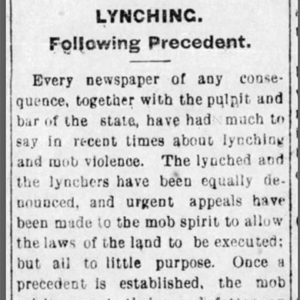 Willis Sees Lynching Article
Willis Sees Lynching Article
 Segregationist Rally
Segregationist Rally
Sesquicentennial Celebration
 Sesquicentennial Program
Sesquicentennial Program
 Sesquicentennial Seal
Sesquicentennial Seal
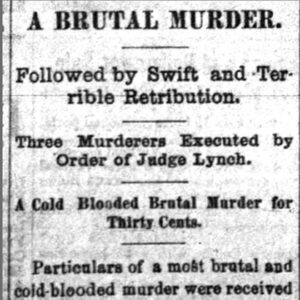 Sevier County Lynching Article
Sevier County Lynching Article
Sevier County Lynching of 1881
Shallow Ford, Skirmish at (August 30, 1863)
Shallow Ford, Skirmish at (September 2, 1863)
Shank, Mark H. (Execution of)
Sharp, William (Murder of)
 Shiloh Quilt Fair
Shiloh Quilt Fair
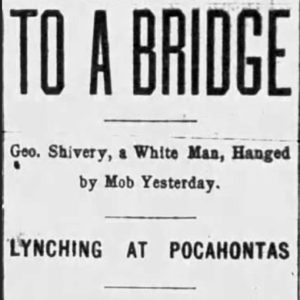 Shivery Lynching Editorial
Shivery Lynching Editorial
Shivery, George (Lynching of)
 Shooting Tribute
Shooting Tribute
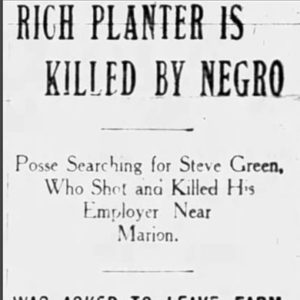 William Sidle Killing Article
William Sidle Killing Article
Sigler (Lynching of)
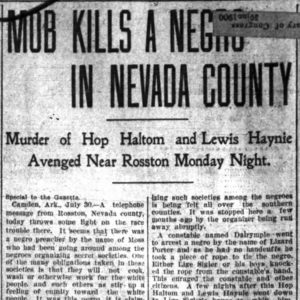 Sigler Lynching Article
Sigler Lynching Article
Simms, Lee (Trial and Execution of)
 Lee Simms Article
Lee Simms Article
Simpson, Louis (Reported Lynching of)
Sit-ins
Six Bridges Book Festival
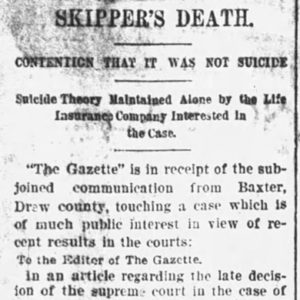 William Skipper Article
William Skipper Article
Skipper v. Union Central Life Insurance Company
aka: William Franklin Skipper (Murder of)
aka: Monticello Lynching of 1898
Slater, Philip (Lynching of)
 Slater Lynching Article
Slater Lynching Article
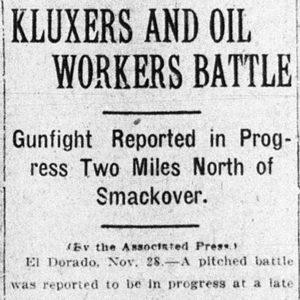 Smackover Riot Article
Smackover Riot Article
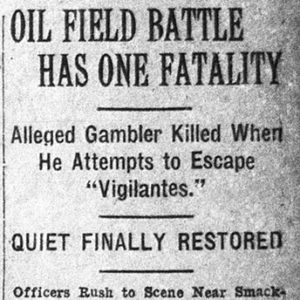 Smackover Riot Article
Smackover Riot Article
Smackover Riot of 1922
Smith (Lynching of)
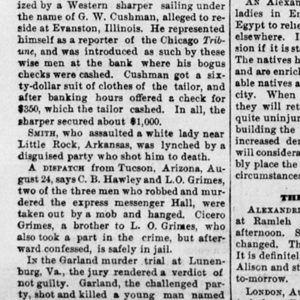 Smith Lynching Article
Smith Lynching Article
Smith, Henry (Lynching of)
 Henry Smith Lynching Article
Henry Smith Lynching Article
Smith, James (Lynching of)
Smith, Jim (Lynching of)
 Jim Smith Lynching Article
Jim Smith Lynching Article
 Smith Lynching Article
Smith Lynching Article




